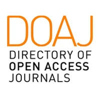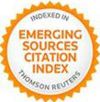Abstract
Keywords
Full Text:
PDFDOI: http://dx.doi.org/10.2423/i22394303v12n2p43
References
Agnello, F., Albano, S., Avella, F., Cannella, M., Giordano, G., & Monteleone, S. (2015). Integrated surveying and modeling techniques for the documentation and visualization of three ancient houses in the mediterranean area. SCIRES-IT - SCIentific RESearch and Information Technology, 5(2), 33-48. DOI 10.2423/i22394303v5n2p33.
Apollonio, F. I. (2019). Conceptual modelling and cognitive process in 3D virtual reconstruction. 3D virtual reconstruction, 3D semantic segmentation, conceptual modeling, knowledge representation. In P. Kuroczyński, M. Pfarr-Harfst, S. Münster (Eds.), Der Modelle Tugend 2.0 – Digitale 3D-Rekonstruktion als virtueller Raum der architekturhistorischen Forschung (pp. 411-430), Heidelberg, Germany: arthistoricum.net. https://dx.doi.org/10.11588/arthistoricum.515.c7583.
Apollonio, F.I. (2016). Classification schemes for visualization of uncertainty in digital hypothetical reconstruction. In S. Münster, M. Pfarr-Harfst, P. Kuroczyński, M. Ioannides (Eds.), 3D Research Challenges in Cultural Heritage II (pp. 173-197). Cham, Switzerland: Springer International Publishing. https://doi.org/10.1007/978-3-319-47647-6_9
Apollonio, F. I., Gaiani, M., & Sun, Z. (2013). 3D modeling and data enrichment in digital reconstruction of architectural heritage. International Archives of the Photogrammetry, Remote Sensing and Spatial Information Sciences, XL-5/W2, 43-48. https://doi.org/10.5194/isprsarchives-XL-5-W2-43-2013
Beretta Anguissola, L. (1963). I 14 anni del piano INA Casa. Roma, Italy: Staderini.
Camagni, F., Colaceci, S., & Russo, M. (2019). Reverse modeling of cultural heritage. Pipeline and bottlenecks. International Archives of the Photogrammetry, Remote Sensing and Spatial Information Sciences, XLII-2/W9, 197-204. https://doi.org/10.5194/isprs-archives-XLII-2-W9-197-2019.
Centofanti, M., Ruggieri, A., Maiezza, P., Tata, A., & Brusaporci, S. (2022). Dal ‘progetto assente’ alla ‘architettura interrotta’. Il ruolo della modellazione digitale 3D nell’analisi storico-critica. Un caso di studio. In E. Bistagnino, C. Battini (Eds), DIALOGHI. Visioni e visualità: Testimoniare Comunicare Sperimentare (pp. 373-390). DOI: https://doi.org/10.3280/oa-832-c29.
Centofanti, M., Brusaporci, S., & Lucchese, V. (2014). Architectural Heritage and 3D Models. In P. Di Giamberardino, P. Iacoviello, R. Natal Jorge, J. M. R. S. Tavares (Eds.), Computational Modeling of Objects Presented in Images (pp. 31-49). DOI: 10.1007/978-3-319-04039-4_2.
Cianci, M. G., Calisi, D., Molinari, M., & Mondelli, F. P. (2021). Representing the past. Methods of digitization of industrial archeology. DISEGNARECON, 14(27), 9.1-9.12. DOI: https://doi.org/10.20365/disegnarecon.27.2021.9.
Clini, P., El Mehtedi, M., Nespeca, R., Ruggeri, L., & Raffaelli, E. (2017). A digital reconstruction procedure from laser scanner survey to 3d printing: the theoretical model of the arch of Trajan (Ancona). SCIRES-IT - SCIentific RESearch and Information Technology, 7(2), 1-12. DOI 10.2423/i22394303v7n2p1.
Frommel, S., Apollonio, F. I., Gaiani, M. & Bertacchi, G. (2020). Some reconstruction hypotheses of Leonardo’s project for the tiburio of the Milan cathedral by using 3D digital models. SCIRES-IT - SCIentific RESearch and Information Technology, 10(1), 53-66. DOI 10.2423/i22394303v10n1p53.
Gaiani, M. (2015). Modelli 3D e studi per un sistema conoscitivo dei portici di Bologna. Bologna, Italy: Bononia University Press.
Gaiani, M., Apollonio, F. I., Ballabeni, M., Cipriani, L., Fallavollita, F., Fantini, F., & Sun, Z. (2015). Strumenti per lo studio dei portici di Bologna: un approccio attraverso una collezione di modelli digitali (pp. 165-180). In F. Bocchi, R. Smurra (Eds.), Bologna's Porticos in the European Context. Bologna, Italy: Luca Sossella Edizioni.
Lenci, R. (2006). Studio Passarelli: cento anni cento progetti. Milano, Italy: Electa.
Migliari, R. (2009). Geometria descrittiva. Novara, Italy: CittàStudi.
Russo, M., Bianchini, C. (2018). Massive 3D acquisition of CH. In A. C. Addison, H. Thwaites (Eds.), Digital HERITAGE 2018. New Realities. Authenticity & Automation in the Digital Age. 3rd International Congress & Expo (pp. 482-489). San Francisco, USA: IEEE.
Storelli, F., & Currà, E. (2003). Il quartiere di Torre Spaccata a Roma (1955-63). In R. Capomolla, R. Vittorìni (Eds.), L'architettura INA Casa (1949-1963). Aspetti e problemi di conservazione e recupero (pp. 197-205). Roma, Italy: Gangemi.
Vittorini, R. (2002). Guida ai quartieri romani INA Casa. Dieci brevi itinerari attraverso i quartieri INA Casa realizzati a Roma dal 1949 al 1960. Roma, Italy: Gangemi.
Zerbi, A., & Mikolajewska, S., (2021). Digital technologies for the virtual reconstruction and projection of lost decorations: the case of the proscenium of the Farnese Theatre in Parma. DISEGNARECON, 14(27), 5.1-5.11. DOI: https://doi.org/10.20365/disegnarecon.27.2021
Article Metrics
Metrics powered by PLOS ALM
Refbacks
- There are currently no refbacks.
Copyright (c) 2023 Maria Grazia Cianci, Sara Colaceci

This work is licensed under a Creative Commons Attribution-NonCommercial-NoDerivatives 4.0 International License.
SCIRES-IT, e-ISSN 2239-4303
Journal founded by Virginia Valzano





